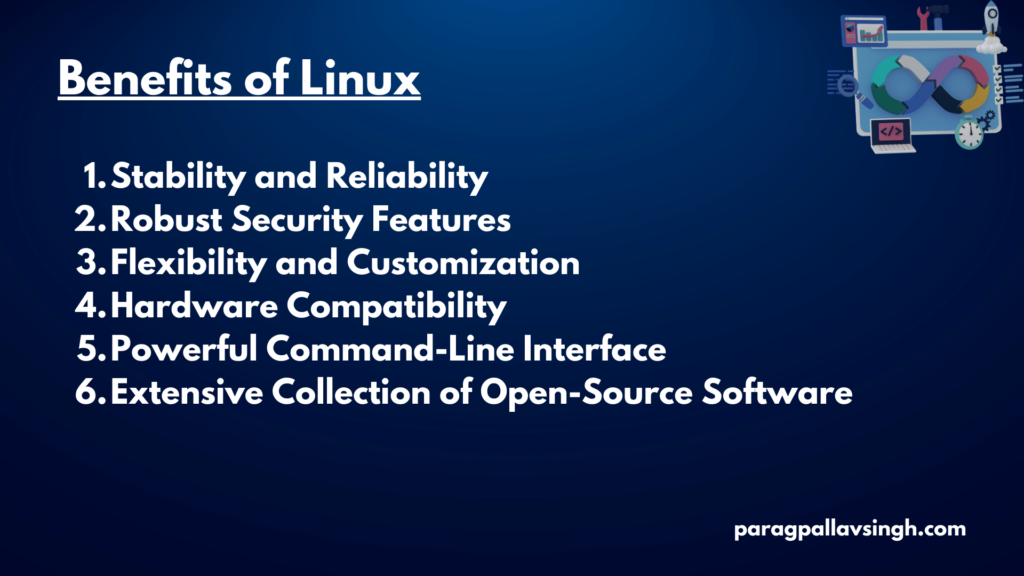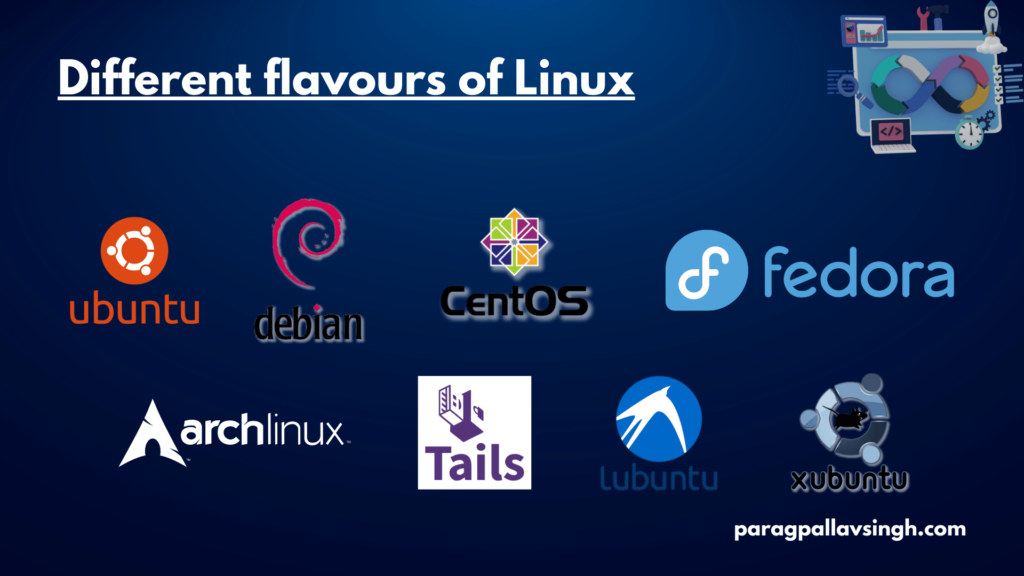Linux, an open-source operating system, offers numerous benefits and advantages that make it a popular choice for users worldwide. Its stability, security, flexibility, hardware compatibility, command-line interface, and extensive collection of open-source software contribute to its appeal.
In the world, 47% of professional developers use Linux-based operating systems. Linux powers 39.2% of websites, 85% of smartphones, and it’s market size worldwide is expected to reach $15.64 billion by 2027.[source]
Let’s discuss more about Linux history and benefits
History of Linux
Linux has a rich history that began in the early 1990s when Linus Torvalds created the Linux kernel. Originally developed as a free and open-source alternative to UNIX, Linux quickly gained popularity due to its stability, security, and cost-effectiveness.
Over the years, a passionate global community of developers contributed to its growth and evolution, expanding its reach from servers to various domains, including desktop computing, mobile devices, embedded systems, and supercomputers.
Today, Linux stands as a testament to the power of collaborative development and open-source software, playing a pivotal role in shaping the modern technology landscape.
Benefits of Linux:
Stability and Reliability:
Linux is designed to handle heavy workloads and can run for extended periods without crashing or experiencing performance issues. Its robust architecture and efficient memory management contribute to its stability and reliability.
Robust Security Features:
Linux is known for its strong security features. Regular updates and patches are released promptly to address vulnerabilities, ensuring the system remains secure. The open-source nature of Linux allows a large community of developers to actively monitor and improve its security.
Flexibility and Customization
Linux offers a high degree of flexibility, allowing users to customize their computing environment to suit their specific needs. Users have the freedom to choose desktop environments, software packages, and system configurations, resulting in a highly personalized experience.
Hardware Compatibility
Linux supports a wide range of hardware platforms, making it compatible with various devices, from embedded systems to servers. This versatility enables Linux to be used in diverse applications, catering to different hardware requirements.
Powerful Command-Line Interface
Linux’s command-line interface provides advanced control over the system. While it may require some learning, it offers powerful tools and scripting capabilities, enabling automation, system management, and complex tasks with efficiency and precision.
Extensive Collection of Open-Source Software
Linux embraces the philosophy of open-source software, which means a vast array of free and open-source applications are available. Users have access to a rich repository of software for productivity, development, multimedia, and other purposes, without the need for licensing costs.

Advantage of Linux over Windows:
- Stability and Reliability: Linux has a reputation for stability and reliability compared to Windows, which has faced issues with crashes and performance.
- Strong Security Features: Linux’s security features, prompt updates, and the active involvement of the open-source community contribute to its strong security, while Windows has often been targeted by malware and requires frequent security patches.
- Greater Flexibility and Customization Options: Linux provides more flexibility and customization options compared to Windows. Users can tailor their Linux system to suit their preferences and specific requirements, while Windows has more limitations in terms of customization.
- Powerful Command-Line Interface: Linux’s command-line interface offers powerful tools and automation capabilities, giving users more control over their system compared to the graphical interface of Windows.

Linux Flavors:
- Ubuntu: Ubuntu is a user-friendly Linux distribution recommended for beginners. It offers an intuitive interface, extensive software repositories, and a strong community support system.
- Xubuntu and Lubuntu: Xubuntu and Lubuntu are lightweight variants of Ubuntu. Xubuntu uses the lightweight Xfce desktop environment, while Lubuntu utilizes the even lighter LXQt desktop. These flavors are suitable for older hardware or devices with limited resources, ensuring smooth performance.
- Tails: Tails is a Linux distribution focused on security and privacy. It routes internet connections through the Tor network by default, includes various security-focused applications, and aims to provide anonymity and secure communication.
- Arch Linux and Manjaro: Arch Linux follows a rolling release model, where updates are continuously delivered. It offers a minimalistic and do-it-yourself approach, allowing users to build their system from scratch. Manjaro, based on Arch Linux, provides a more user-friendly experience while still offering the benefits of a rolling release.
- Fedora: Fedora is known for its cutting-edge software and strong community involvement. It aims to be at the forefront of technology, offering the latest software packages and features to users.
- CentOS: CentOS is a stable and reliable Linux distribution often used for server environments. It is a free, community-supported version of Red Hat Enterprise Linux (RHEL), known for its long-term support and compatibility with enterprise applications.
These Linux flavors offer different features, focuses, and target user bases, ensuring that there is a distribution available to meet various needs and preferences.


